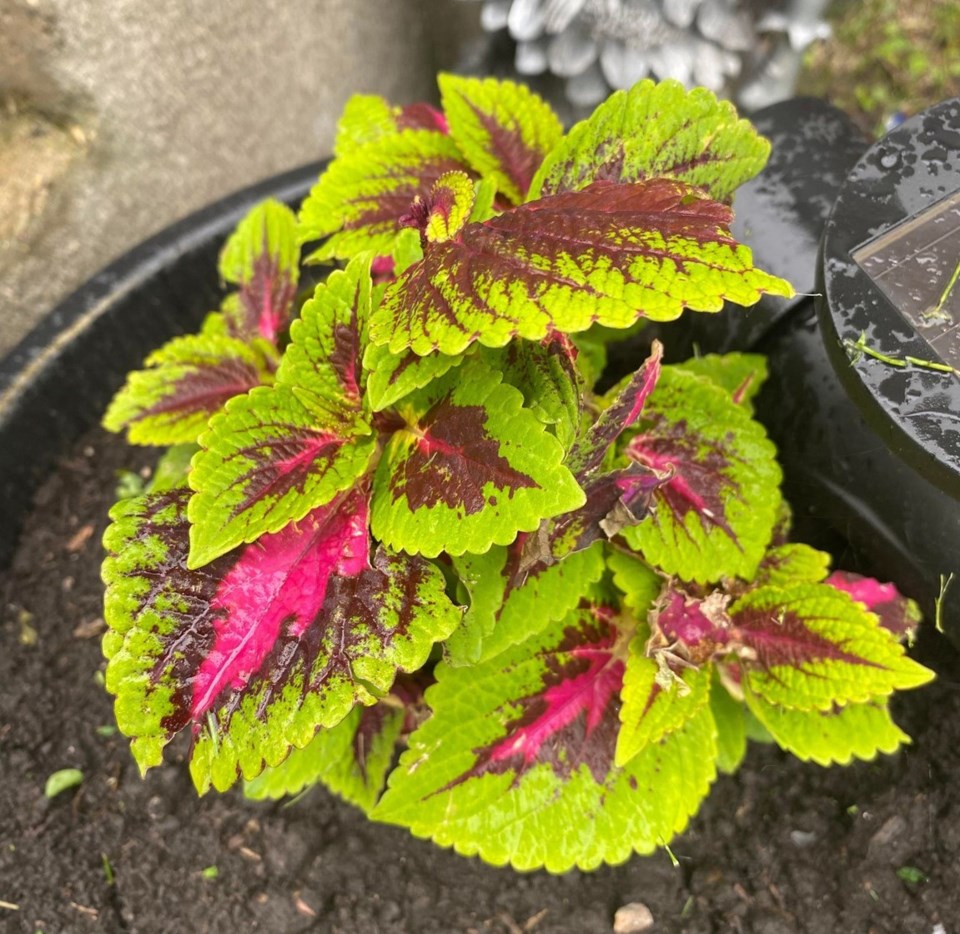YORKTON - Pop quiz, gardeners: what plant is known as ‘painted nettle’? If you guessed coleus, you’re right! Our recent trip to Edmonton, our visit to the Muttart Conservatory gave us the chance to see many beautiful plants, providing inspiration and a chance to learn something new. In the main exhibit pyramid, the chosen display plant was hydrangea. Imagine mounds and drifts of pink, purple, blue and white hydrangeas in full bloom, it was simply breathtaking!
Interspersed with the hydrangea were spikes of bright blue flowers. Keith asked if that was salvia, but on closer inspection, we discovered it was coleus in bloom!
Quite often gardeners pinch off the blooms of coleus so that the plant will send new shoots and become more profuse. Also, if the plant is allowed to go to seed, it will begin to fade. But in this instance the blooms were left on, and they were very striking!
So, let’s talk coleus. Coleus, plectranthus, comes to us from the tropics, is a member of the mint family, and is a plant that prefers a location of light shade or indirect sunlight. There are some varieties of coleus that can take more sun, but as a rule, coleus like light shade, well drained soil, and moderate moisture. They do not like wet feet and will rot quickly if left in that situation. Mom always used to say that a plant can recover better from being slightly dry than from being too wet, so if you have neglected your coleus for some reason, be careful not to try and play ‘catch up’ and douse it with water! In fact, if it is overwatered it will wilt!
Because coleus likes partial shade, it is the ideal plant to bring exciting pops of color to corners where flowering plants may not grow. Coleus can be planted directly into our flowerbeds, but it also does very well in containers. Containers give us the flexibility to move them around and create new combinations or displays. Be sure the container is roomy enough for the plant.
We can enlarge our coleus collection by taking cuttings. These work very well, and we can start them rooting just by putting them in a glass of water. Sometimes you might see an interesting new coleus in seed collections; yes, they can be started from seed, we just have to allow more time for them to reach transplanting size, usually about ten weeks prior to when we want to set them out. Coleus are very tender, so all danger of frost must be past.
And talk about variety! There are hundreds of varieties of coleus, with different leaf shapes and leaf sizes, and amazing colors like electric lime green, deep maroon, white and green, burgundy and violet, and some that are random variegations that make every leaf different from the other.
The velvety leaves of the coleus add lovely texture as well as color to containers and look as pretty as any blooming plant. I have been told that nice leaf color comes when we give our coleus a chance to enjoy direct morning light and direct evening light. I think we have to be careful with this, though; if the day is the kind of day where it’s 23 degrees by 8AM, the sunlight might be too strong.
We should watch for aphids and whiteflies on our coleus plants; they can be washed off with water or by using a gentle insecticidal soap.
Coleus: the plant with the bright and beautiful leaves! See what’s happening with the Yorkton hort society at www.yorktonhort.ca Thank you to our friends at YTW for their great work. Hopefully your garden was not damaged by the recent hail. Have a good week!






